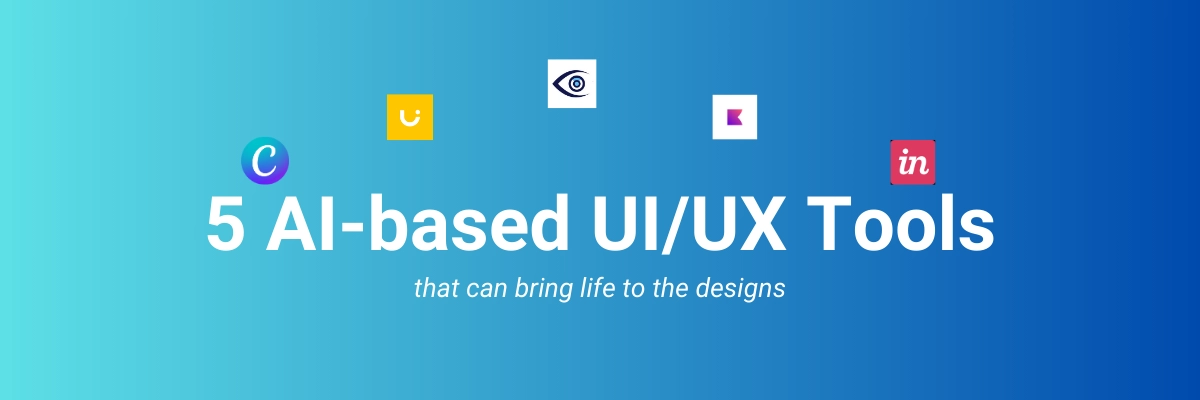



Machine learning is one-of-a-kind artificial intelligence that helps software applications to be more precise and accurate in predicting outcomes without any need for hefty programming and coding.
Historical data is used as input for machine learning algorithms for predicting outputs.
Machine learning is a field of AI that focuses on creating algorithms and models that enable computers to learn from data, while machine learning tools are software and resources that help in implementing, managing, and optimizing machine learning tasks, empowering users to harness the power of machine learning in their applications and systems.
Machine learning is advancing industries while reducing cost and time consumption with efficacy. Let’s take a look at how machine learning is changing the business landscape.
Data-driven decision-making: Machine learning enables organizations to leverage vast amounts of data to make informed and data-driven decisions. By analyzing historical data, patterns, and trends, machine learning algorithms can provide valuable insights and aid in strategic planning.
Automation and efficiency: Machine learning allows automation of repetitive tasks and processes, leading to increased efficiency and productivity. This can range from automating customer service interactions through chatbots to optimizing supply chain logistics.
Recommendation: Machine learning has revolutionized personalization in various applications, such as personalized product recommendations, content suggestions, and targeted marketing campaigns. This enhances the user experience and customer satisfaction.
Healthcare advancements: In the healthcare industry, machine learning plays a crucial role in disease diagnosis, medical imaging analysis, drug discovery, and personalized treatment plans. It has the potential to improve patient outcomes and reduce healthcare costs.
Fraud detection and cybersecurity: Machine learning algorithms can detect anomalous behavior and patterns in data, making them valuable tools in fraud detection, cybersecurity, and threat analysis.
Natural Language Processing (NLP): NLP powered by machine learning allows computers to understand, interpret, and generate human language. This has led to advancements in virtual assistants, language translation, sentiment analysis, and text summarization.
This framework is open source for machine learning algorithms which is implemented on the top of Apache Hadoop. For an easier approach to finding patterns in very large data sets the framework is commonly used by data scientists, mathematicians, and statisticians. Apache Software Foundation built the framework to build up a next-gen mobile application that can learn from user behavior and recommend any outcome or result accordingly.
Which features make it a trusted source?
The large data center cluster that runs Apache Hadoop, this framework is designed to distribute on those. Helps in reducing paradigm.
To solve the common problems in various industries the framework uses a set of algorithms.
Mahout provides its users with an open community forum of its own to conduct direct discussions between users to address issues.
The patterns in user data can be discovered by the AWS machine learning tools. The developers can discover the pattern with it using the algorithm, constructing mathematical models based on that built-up pattern and predicting. For any use case, the Amazon SageMaker toolset helps developers and data scientists build, train, and deploy machine learning models.
Which features make it unique?
BigML is used to make eligible users load their own sets of data, build and share those data models evaluate those models, and generate new predictions. It can either predict singularly or in a batch. BigML is more interpretable as it provides interactive visualization and explanatory features.
Which features make it suitable for the users?
Colaboratory is the full form of Google’s Colab which is a cloud-based service that helps developers to build machine learning applications. The users can merge and combine this code set with texts, images, and HTML to build trained machine-learning models.
Specific features of the model:
State-of-the-art transfer learning and neural architecture search technology, Google Cloud AutoML helps developers with limited knowledge of machine learning with the collection of machine learning products that train high-quality models.
Specific features of the models:
IBM Watson is not only popular for machine learning but also in cognitive computing and artificial intelligence. The developers use IBM Watson Studio to put their machine learning and deep learning models into production. It offers tools for data analysis and visualization along with data shaping and cleaning.
Specific features of the models:
Anaco da is mainly an IDE (Integrated Development Environment). Developers can work in the most specialist environments for data science and machine learning for statistical programming with R. Therefore, the pre-installed packages and package manager for easier package dependencies management and resolving conflict between the packages.
Specific features of the models:
Building, testing, and deploying machine learning models can be done with Azure Machine Learning. The collaborative and drag-and-drop design lets the developers go through the entire machine-learning process. It also offers features for preparing data exploration, model training, and development model validation along with continuous monitoring. To help the users build their predictive analysis models Azure visually connects the data sets as it also requires no programming.
Specific features of the models:
OPENN stands for Open Neural Network Library. It is a software library that is used for implementing neural networks that focus on the main area of deep machine learning research. OPENN also offers sophisticated algorithms and utilities that can deal with artificial intelligence solutions.
Specific features of the models:
Pytorch is mainly based on Python programming language and Torch library. It is an open-source machine-learning framework that is used to create neural networks and is written in Lua scripting language. The framework is primarily built to speed up the process between research prototyping and deployment.
Specific features of the models:
It is one of the most robust and useful machine-learning libraries in Python. Users can avail a range of efficient machine-learning tools along with statistical modeling. Classification, regression, clustering, and dimensionality reduction through a consistent interface in Python. As an open-source library and active community, the users can learn about machine learning while asking questions.
Specific features of the models:
Shogun is a free source of machine-learning tools for every user. It offers several numbers of algorithms and structures of data for machine learning problems. Shogun can ensure that the underlying algorithms are transparent and accessible. Setting apart from other machine-learning tools and frameworks, the Shogun library is one the most efficient and established language-wise including Python, Java, R, Octave, and Ruby.
Specific features of the models:
It is an open-source machine-learning framework that has extensive inclusion of several tools, libraries, and resources. TensorFlow helps users build, train, and deploy machine learning models. Natural language processing, predictive machine learning, computer vision, and reinforcement learning are some of the wide range of offers that it offers.
Specific features of the models:
Google created Vertex AI as a unified artificial intelligence platform to address and resolve the issues encountered while creating and implementing machine learning models. It unifies several processes in the workflow of machine learning. A unified process helps the users to train their machine learning models and host these models in the cloud ultimately reaching conclusions about any large amount of data through these models.
Specific features of the models:
Weka is a collection of visualization tools and algorithms to analyze data, data mining, and predictive modeling. It offers tools for data preparation, classification, regression, clustering, association rules mining, and visualization.
Specific features of the models:
Pytorch Lightning is the primary layer on top of Pytorch, built mainly to focus on research instead of on engineering and other redundant tasks. The developers can focus on multiple models in a short time as Pytorch Lightning abstracts the underlying complexities of the model and common code structures.
Specific features of the models:
Catalyst is another Pytorch machine learning framework that is designed for deep learning solutions. It assists in engineering tasks like code reusability and reproducibility, facilitating rapid experimentation.
Specific features of the models:
LightGBM is a gradient-boosting algorithm that uses tree-based models. In terms of speed, it is faster than other machine learning tools or frameworks.
Specific features of the models:
With minimal training, CatBoost provides the best results compared to other machine learning models. It is an open-source tool and quite popular due to its convenient usability. It is a supervised machine learning method and uses decision trees for classification and regression.
Specific features of the models:
Fast.ai has been developed to make deep learning accessible across multiple languages, small datasets, and operating systems. It is a deep learning library that provides practitioners with high-level components that are quick and easily provide the best results for deep learning domains.
Specific features of the models:
Pytorch Ignite is a high-level library for helping with training and evaluating the neural networks in Pytorch with flexibility and transparency. Ignite provides users with an interface that can structure the architecture, criterion, and loss into one function to train and evaluate.
The high-level features of PyTorch Ignite are:
Accord.Net is a .Net based machine learning framework that is mainly used for scientific computing. The audio and image processing library is combined with it and is written in C#. .Net framework provides different libraries for several applications in ML, like, Linear Algebra, Pattern Recognition, and Statistical Data Processing.
Specific features of the framework:
Built on Apache Kafka and Apache Spark. Machine learning projects that are real-time and large-scale use Oryx2. This machine learning framework is designed to build apps including end-to-end applications to filter, package, regression, classification, and cluster.
Specific features of the framework:
Apache Spark MLlib is a scalable machine learning library that runs on Apache Mesos, Hadoop, Kubernetes, Standalone, or in the cloud.
Specific features of the framework:
In this article, some of the machine learning tools and frameworks have been discussed. Though there are more ML tools and frameworks usage is based on the type of project and its requirements. Each tool functions in a different language and is designed with some specifications.


April 11, 2023
Admin wrote

July 8, 2022
Admin wrote


Subscribe to our newsletter